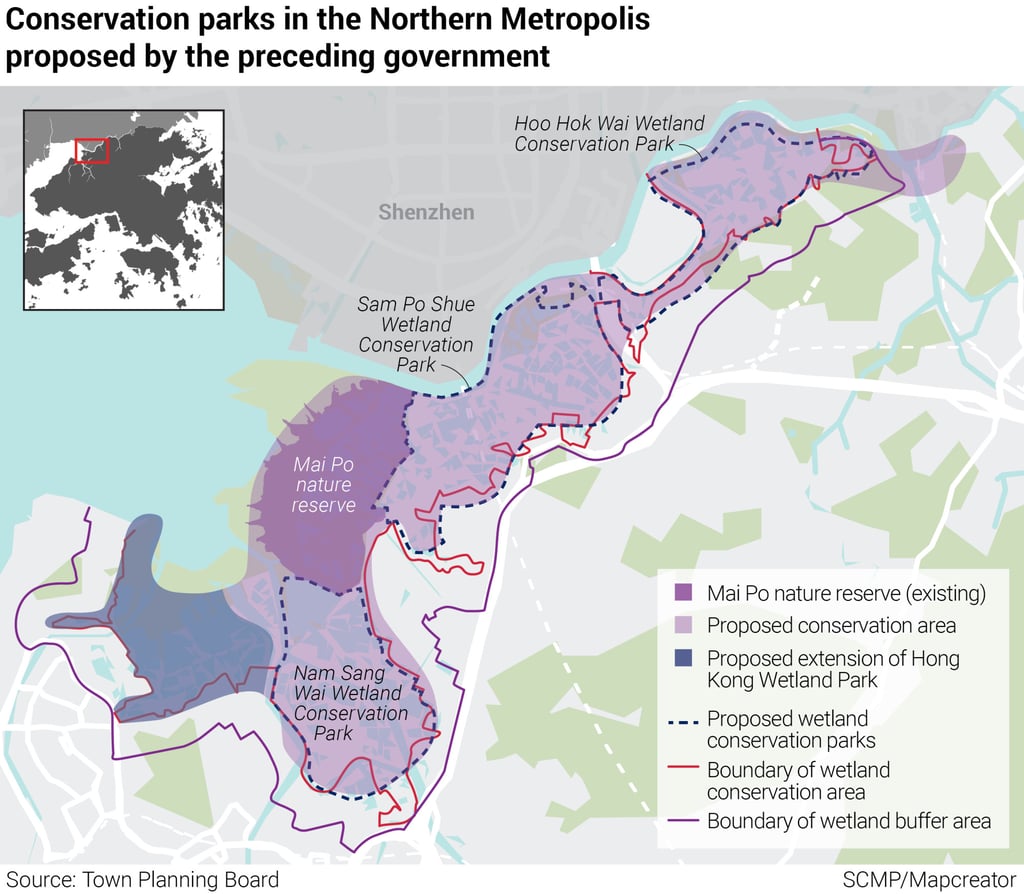Advertisement
Opinion | Hong Kong wetlands risk losing out to technology in development plans
- One of the top questions with the Northern Metropolis is how the government will protect irreplaceable biodiversity assets while planning huge building works
- Early indications are that hi-tech dreams will win out over the responsibilities Hong Kong has to protect biodiversity of global importance
Reading Time:4 minutes
Why you can trust SCMP
1

The announcement of the Northern Metropolis in 2021 was a welcome focus on an area of Hong Kong that had not been comprehensively planned. It covers a wide strip of land along the border with Shenzhen. It includes existing towns at Tin Shui Wai and Yuen Long and developing areas at Kwu Tung and elsewhere. It also includes areas of high ecological value.
One of the biggest questions with the Northern Metropolis is how the government will protect and enhance irreplaceable biodiversity assets while planning massive building works. Early indications are that hi-tech dreams will win out over the responsibilities Hong Kong has to protect biodiversity of international importance.
The immediate battle is between the proposed San Tin Technopole and the proposed Sam Po Shue Wetland Conservation Park. San Tin is an old centre of traditional villages with heritage buildings. It is located to the north of Castle Peak Road and to the west of the Lok Ma Chau crossing.
Advertisement
To the north of the villages is a big area of wetland which leads to the Shenzhen River, the border with the mainland. Immediately on the other side of the river is the intense urban development of the city of Shenzhen. The technopole is expected to expand from San Tin across the wetland, removing a significant portion.
I recently hiked with others to the top of Hadden Hill, a high point overlooking San Tin. It gives a panoramic view of Hong Kong and Shenzhen developments as well as Deep Bay. The dramatic impression for our group was how big Shenzhen is and how small the technopole will be.

Hong Kong has protected a large wetland area while Shenzhen has developed right up to the water. There has been a massive reduction in wetland around Deep Bay. When we identified where the technopole would be and the negative impact it would have on this amazing natural asset, the questions that came all shared one thought – why?
Advertisement
Select Voice
Choose your listening speed
Get through articles 2x faster
1.25x
250 WPM
Slow
Average
Fast
1.25x
